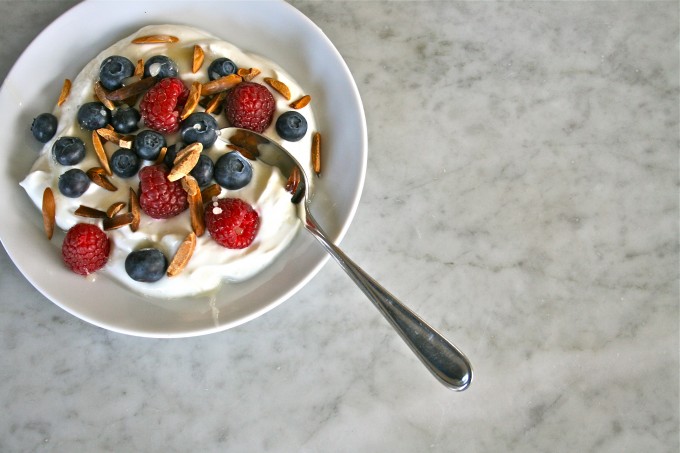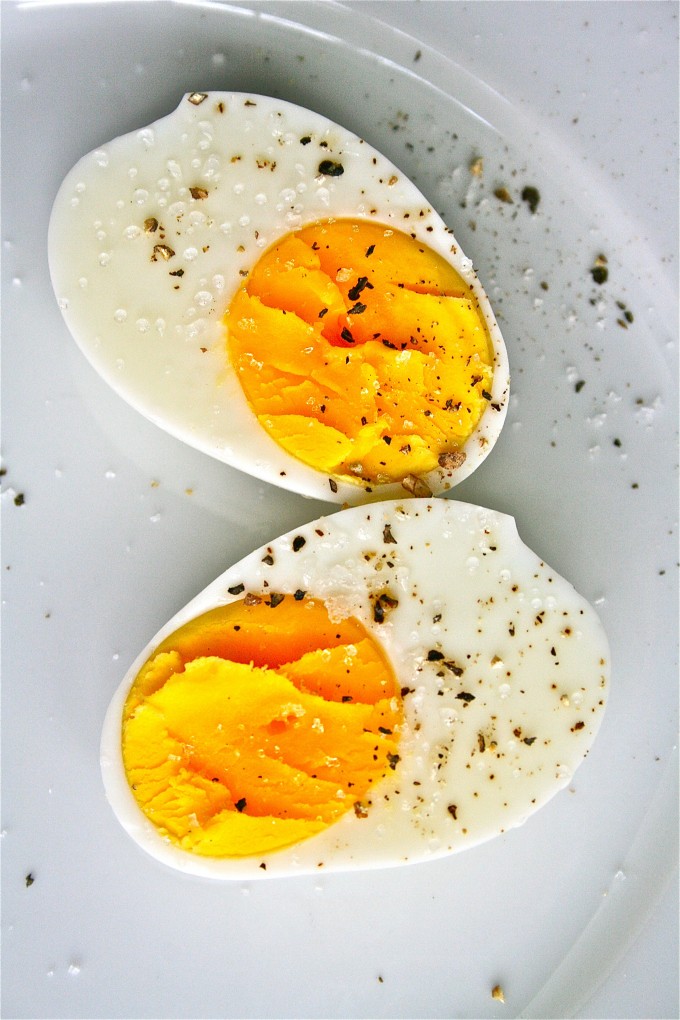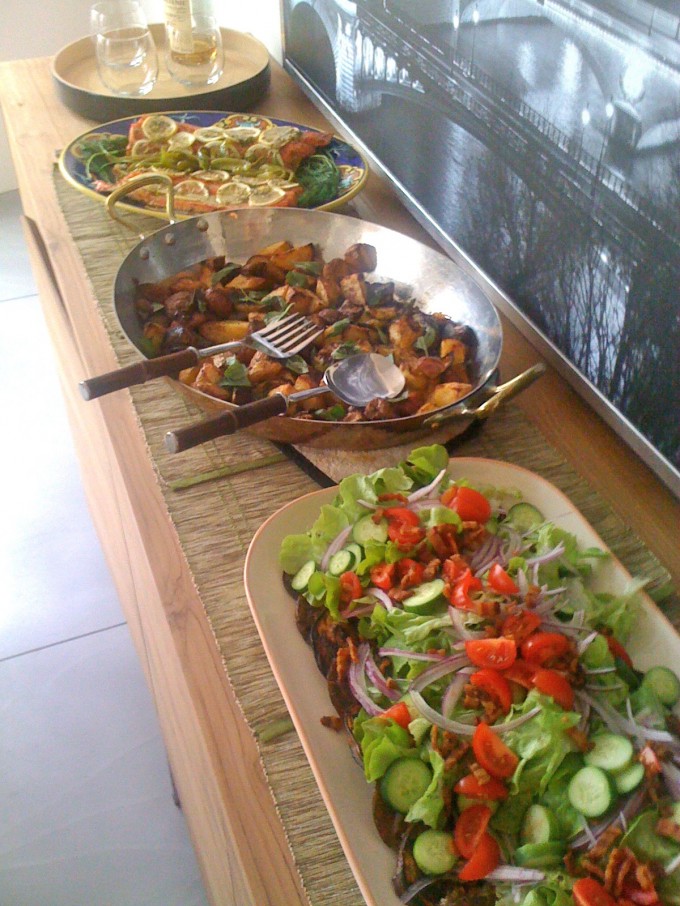
Breakfast is the most important meal of the day.
…
Oh sorry, I just fell asleep for a second. You? But in all seriousness, while I know that starting a blog post with a boring sentence like that breaks rule #1 of captivating an audience, hear me out:
I freakin’ love breakfast. Although it typically provides just 17% of our day’s total calories, it accounts for a much higher proportion of important vitamins and minerals like calcium, vitamin D and potassium. The bulk of the research shows that eating breakfast daily is important for weight maintenance too, not to mention mood and mental stamina. So what does this dietitian eat to keep herself fueled until lunchtime? Here are my personal go-to’s – quick, balanced and good.

- ¾ cup cooked whole grain + ¾ cup plain Greek yogurt + fruit (unlimited) + 2 tablespoons toasted nuts or nut butter + sprinkling of cinnamon.
I prepare the grains and toast the nuts in bulk once or twice a week (Sundays or weekday nights after dinner) so I can make quick work of morning prep. To keep things interesting I switch up the grains – oatmeal, yes, but also farro, barley, quinoa, brown rice, etc. Seriously, try this ASAP.
- 1-2 slices whole grain bread (the grainier the better) + 2 tablespoons peanut butter + ½ cup plain Greek yogurt + sliced banana and/or strawberries + sprinkling of cinnamon
This is like breakfast banana shortcake – bread toasted, everything else heaped on top, consumed with a fork and knife.
- 1-1 ½ cups cereal + 1 cup milk + 2 tablespoons toasted nuts or nut butter + fruit (unlimited) + cinnamon
I try to choose cereals with more than 5 grams of fiber and less than 4 grams of sugar per serving (equivalent to 1 tsp). I also mix high- and low-calorie options so I get the belly-filling benefits of the former and the bulk of the latter. Some of my favorites:
- Nature’s Path Heritage Flakes (3/4 cup serving contains 120 calories, 5 grams fiber, 4 grams sugar)
- Ezekiel 4:9 Sprouted Whole Grain Cereal, Original (1/2 cup serving contains 190 calories, 6 grams fiber, 0 grams sugar)
- Cheerios (1 cup serving contains 100 calories, 3 grams fiber, 1 gram sugar) Note: I only add this for bulk. Cheerios alone would never keep me satisfied until lunch.

- 1-2 slices whole grain toast (the grainier the better) + 1-2 eggs prepared anyway + ½ sliced avocado + sliced tomatoes + drizzle of olive oil + fruit on the side
Of all the options listed, this is probably the one I have for breakfast the least, but not because I don’t LOVE it. Instead, it’s because eggs are a go-to protein source for me at lunch or dinner and I don’t want to overdo it. If you lean towards the savory, an egg breakfast is an incredibly healthy choice, and I find more filling than many of the other options. And don’t skip the yolk – it provides nearly half the protein and the majority of the rest of good vitamins and minerals found in eggs. Yes, it also houses most of the cholesterol, but research shows that dietary cholesterol is not nearly as big of a contributing factor to your body’s cholesterol as saturated fat.
What’s in your breakfast rotation? As long as it’s got belly filling fiber from fruits/vegetables and/or whole grains and a little protein from dairy/eggs/nuts/legumes/animal protein/etc. to make the fullness last, you’re nailing it!
